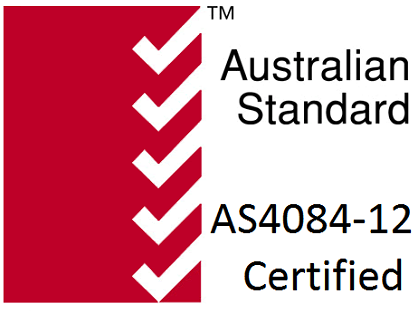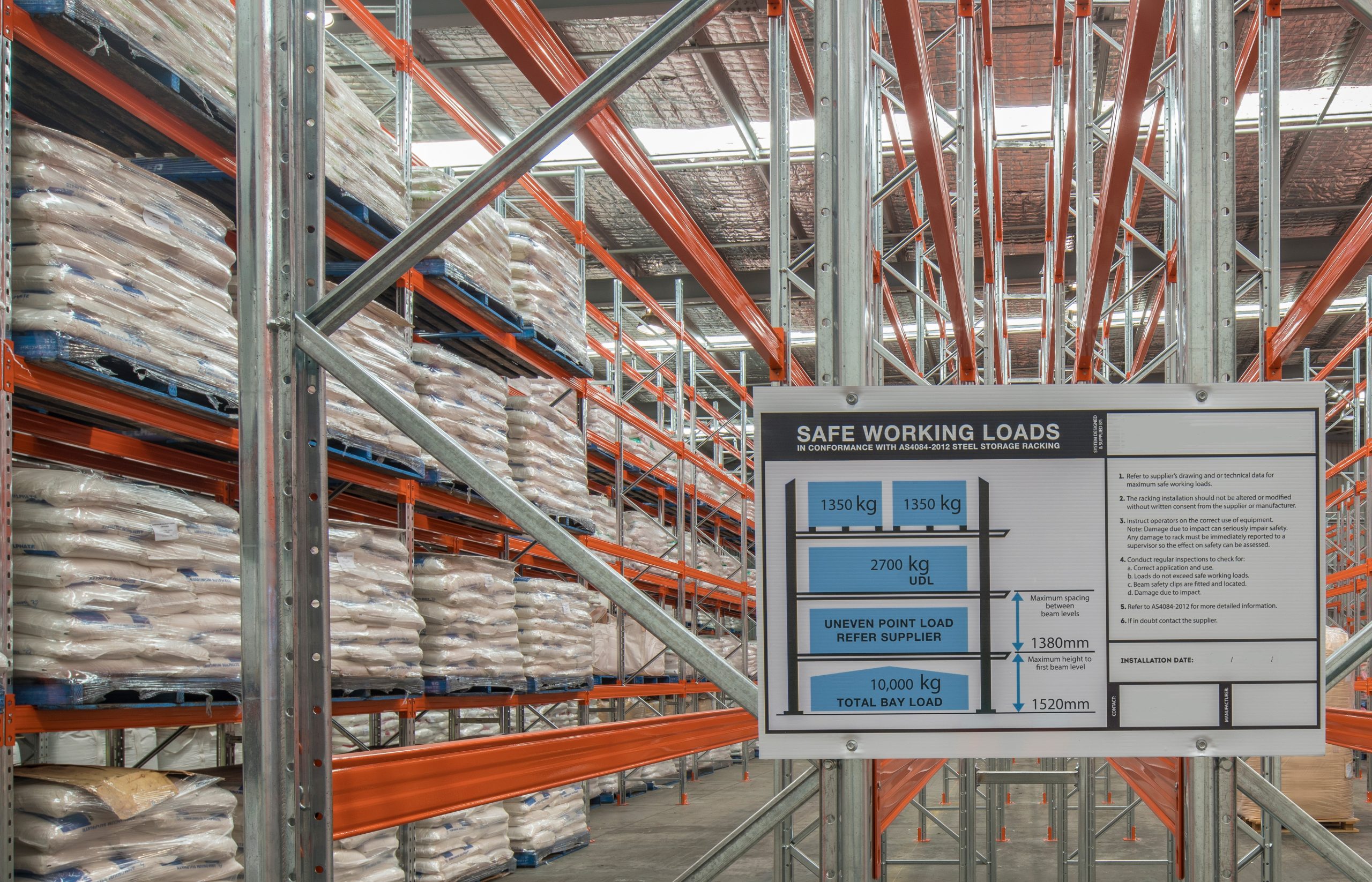Pallet racking is a crucial component in the world of efficient warehousing and logistics. Adhering to established standards is essential to ensure pallet rack safety, compliance and operational effectiveness.
In Australia, there are a few established standards related to safe practices in pallet racking and handling. In this blog we will pay particular attention to AS 4084-2012 – steel storage racking. This Australian Standard for pallet racking provides comprehensive instructions for designing, installing and maintaining pallet racking systems.
Whether you’re a warehouse manager, business owner, or industry professional, understanding these standards is key to creating a secure and optimised storage solution.
What are Australian pallet racking standards?
Australian/New Zealand Standards (AS/NZS) are a set of technical specifications, guidelines and best practice recommendations endorsed by the authoritative bodies within a specific field. Australian pallet racking standards encompass a comprehensive set of guidelines and pallet rack safety regulations that dictate the design, installation and maintenance requirements for pallet racking systems. The primary Australian standard for pallet racking is AS 4084-2012.
While other Australian pallet standards exist for related aspects of pallet handling, the AS 4084-2012 standard covers various important aspects of pallet racking, including:
- Load capacity – these calculations determine the maximum weight that a racking system can safely support.
- Structural integrity – these requirements ensure that the racking components are designed and manufactured to withstand the expected loads and forces exerted on them.
- Spatial planning – these considerations include rack/site configuration, aisle dimensions, space for equipment access and maneuverability as well as staff safety.
- Safety measures – these guidelines describe the appropriate pallet rack safety accessories, equipment, processes and maintenance which are aimed at preventing accidents and injuries.
Why are Australian standards for pallet racking important?
Firstly, AS 4084-2012 is highly significant for operational efficiency in pallet racking systems. Adhering to recommended spatial configurations allows for efficient warehouse layouts, facilitating smooth movement of goods and easy accessibility. The standard also provides maintenance guidelines, promoting regular inspections and upkeep of pallet racking systems. This minimises disruption and downtime by proactively identifying and addressing potential issues.
Secondly, Australian Standards provide guidelines and regulations on safety. Ultimately, warehouse racking safety standards help to minimise accidents, protect personnel and safeguard inventory in warehouses and storage facilities. The standard specifies load capacity calculations to prevent structural failures and maintain a safe working environment. Implementation of appropriate safety measures, such as pallet rack safety accessories, employee training and regular inspections, is highlighted to mitigate hazards and promote a culture of safety.
Lastly, pallet racking compliance with industry standards is often a prerequisite for certifications, inspections and audits conducted by regulatory bodies or external entities. By meeting the standards outlined in AS 4084-2012, companies can demonstrate their commitment to quality assurance and adhering to the recognised benchmarks for pallet racking systems. By failing to comply with these standards, companies face potential legal ramifications or forced shutdowns that can lead to financial and reputational losses.

What happens if my pallet racking is not compliant?
There are a number of potential consequences of failing to comply with Australian pallet racking standards. Beginning with the most serious, non-compliant pallet racking systems may result in serious injury to human life, including death. Moreover, unsafe pallet racking systems can cause damage to goods and equipment.
Regulatory consequences can also apply to non-compliant racking systems including, but not limited to, fines and forced shutdowns. Companies can also incur further financial consequences from non-compliance in the form of operational inefficiencies; increased maintenance/repair costs; and loss of business due to reputational damage.
Steel storage racking audits
Regular pallet racking audits are essential to assess factors like proper installation, alignment, anchoring, load distribution and adherence to relevant standards, such as AS 4084-2012. A pallet racking audit involves a thorough examination of the different elements comprising the racking system by a qualified inspector. This includes assessing the structural features of a racking system and its safety accessories.
The audit encompasses visual assessments, physical checks and measurements to assess the overall integrity, stability and operational effectiveness of the racking system. Following the audit, a report is created which presents the inspection findings, including any identified issues or concerns. This report helps companies take proactive measures to rectify the identified issues, perform necessary repairs, establish maintenance plans and uphold pallet racking compliance with Australian standards.

Choose Pallet Racking Sydney for pallet racking compliance and pallet racking audits
If you’re in doubt about Australian pallet racking standards, contact the experts at Pallet Racking Sydney. We specialise in providing AS 4084-2012 compliant pallet racking systems that prioritise safety, efficiency and durability. We also offer accredited pallet racking audit services to ensure the ongoing safety and compliance of your racking systems.
